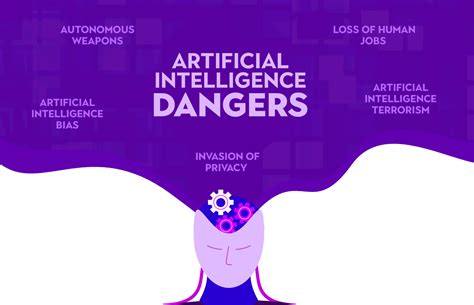The Impact of Artificial Intelligence on Cryptocurrency Volatility
In recent years, the cryptocurrency market has seen significant volatility, with prices fluctuating wildly in response to various market and economic factors. Artificial intelligence (AI) has emerged as a key driver of this volatility, as its impact is felt across multiple aspects of the cryptocurrency ecosystem. In this article, we examine the impact of AI on cryptocurrency volatility and explore ways to mitigate it.
The Rise of AI in the Cryptocurrency Market
As cryptocurrencies such as Bitcoin (BTC) and Ethereum (ETH) continue to grow in popularity, their prices are becoming increasingly sensitive to market sentiment. One important factor influencing this volatility is the impact of AI. Trading systems powered by AI are able to analyze vast amounts of data and predict market trends, which can lead to rapid price movements.
How AI Affects Volatility
There are several ways in which AI affects cryptocurrency volatility:
- Predictive Modeling: AI algorithms can create predictive models that predict market trends based on historical data. These models can then be used to predict future price movements, allowing traders and investors to make informed decisions.
- Automated Trading: AI-powered trading systems can automate the buying and selling of cryptocurrencies in real time, taking advantage of market inefficiencies and potential profit opportunities.
- Price Manipulation: AI algorithms can analyze market data and identify patterns that may indicate price manipulation or insider trading. This could increase regulatory scrutiny and potentially lead to market corrections.
Impact on Price Volatility
AI-driven price volatility has several implications, including:
- Increasing Price Drops: AI-powered trading systems can react quickly to changes in market conditions, leading to rapid price drops as traders and investors react to news.
- Increased Market Sensitivity: The impact of AI on cryptocurrency prices means that even small factors can lead to significant price swings, making markets more volatile than they would otherwise be.
Examples of AI-driven Price Swings
A few notable examples illustrate the impact of AI on cryptocurrency volatility:
- The 2017 Bitcoin Correction

: After a sharp price increase in Bitcoin in December 2017, the cryptocurrency experienced a dramatic correction in February and March 2018, with prices falling by more than 50% in a matter of weeks.
- Ethereum Price Rise in 2019: In January 2019, the price of Ethereum rose to an all-time high of $4,000 per token, fueled in part by speculation and AI-based trading systems.
Mitigation of AI’s Impact on Volatility
While AI is undoubtedly a key driver of cryptocurrency volatility, there are measures that can mitigate its impact:
- Regulatory Scrutiny: Regulators have begun to consider the potential role of AI in price manipulation and insider trading. As a result, many exchanges and brokers are now implementing anti-money laundering (AML) and know-your-customer (KYC) protocols to prevent illicit activity.
- Better Transparency
: Efforts to increase transparency in the cryptocurrency market can help curb speculation and encourage more informed decision-making by traders and investors.
- Improved Trading Tools: The development of trading tools that incorporate AI-based analytics, such as machine learning algorithms and natural language processing, can help reduce the impact of human bias and provide more accurate predictions.
Conclusion
In short, the impact of AI on cryptocurrency volatility is multifaceted and far-reaching.

